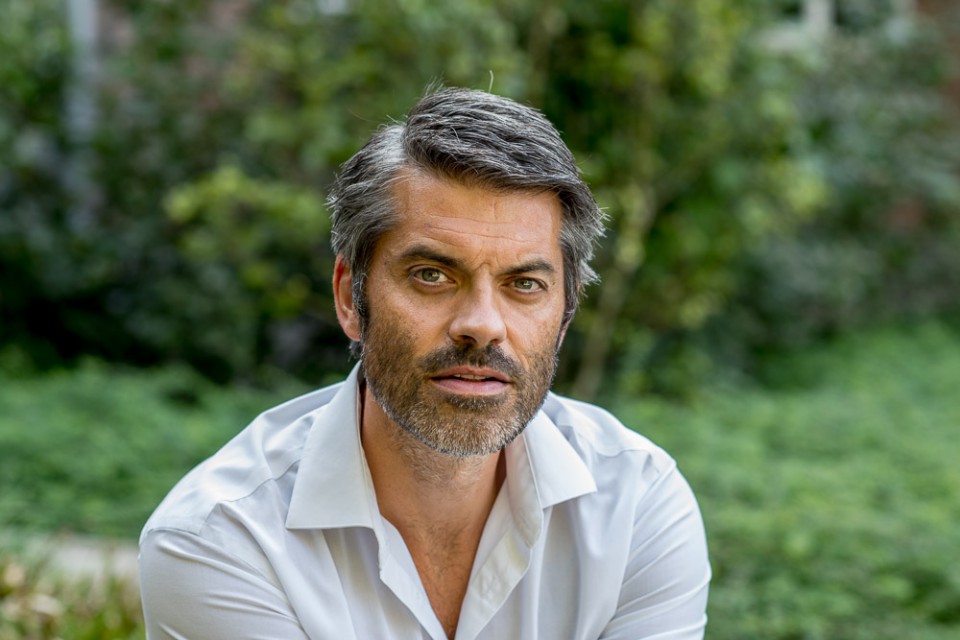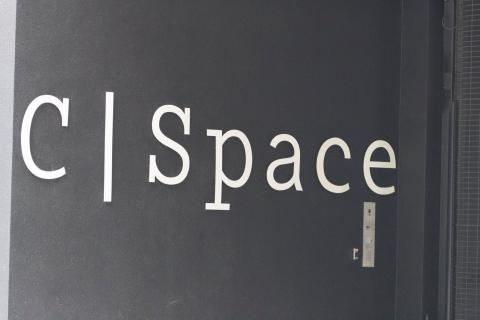Using Clean Space with organizational trauma
by Marian Way in Business

When Philippe Bailleur, author of Stuck? Dealing with organizational trauma, attended our Clean Space training earlier this year, he told me how helpful Clean Language and Clean Space can be in his work. We didn’t have time then for an in-depth conversation about this, so we agreed that I would interview Philippe over Skype…
So, Philippe, tell me a little bit about your book to start with…
When I first started working with companies I found that I sometimes bumped into a different kind of energy. I have a lot of trauma in my family background and I recognised and resonated with that same ‘trauma energy’ in companies. I seem to have a ‘trauma radar’ and can recognise this kind of energy in companies too.
At the beginning I was too uncertain to do anything about that but as it happened more and more I started working in a different way. I started to see that companies, just as individuals, can get stuck in the past. And those companies need another approach that is closer to healing than to fixing. Plus corporate people need language and labels that are not too far from their own kind of thinking and talking to open their minds for this phenomenon. Based on my experience with companies, I started looking for words.
One of the concepts I started using is a ‘trauma capsule’ as a metaphor for energy and toxins that can still be encapsulated in the deeper tissue of a living system. If you don’t deal with it, it keeps demanding energy to keep it under control, just like unhealed emotions.
The first aim of the book is about how to recognise organisational trauma and how to deal with it, so it can heal, so the company can move on without dragging it into the future in an unhealthy way
And how do you know whether it is an individual or an organisation that is stuck?
That’s a good question. If I sense there’s trauma in a living system, I start asking questions. I start exploring it. Then it becomes clear whether it’s about an individual, a team, a whole department or even a whole company. Part of my work is to figure out where, how deeply and how broadly, the living system is still stuck. Most of the time, the leaders of a company are not aware of this phenomenon. But by talking about it, they start reflecting in a different way about situations that seem stuck in their company.
A while ago, a business leader who showed interest in my work, told me about a department that had not been moving forward for years. I started asking some questions and before long we bumped into a possible cause of this. Of course, only by really working with that department can this intuitive hypothesis be validated.
So what kind of tools for healing do you recommend in your book?
The most important thing is to be or to become aware that such a thing as organisational trauma can exist; that a company or part of a company can get stuck in time. I can imagine that some people would like a short list of events that cause organisational trauma, but that list does not exist. Each company is unique and has its own vulnerabilities. You can compare it with houses and earthquakes. A rickety house can survive a minor earthquake and a well-build house can collapse after a huge earthquake. Organisational trauma is always a combination of the vulnerability of a living system combined with the impact of an overwhelming event.
Besides, a list would be counter-productive in doing the right healing work. We could do a lot of research and come up with a ‘top 10’ causes but that still wouldn’t be the list. And it would have a negative impact on a company that gets traumatised with cause number 11 because that company and the people of that company would not get the acknowledgement they need, one of the critical components for healing.
Another aspect of the book is understanding how organisational trauma develops. The more managers understand how trauma develops, the more levers will show up to heal it or the more aware they could act when their company has a tough time.
Systemic intelligence is a great help in dealing with this phenomenon. To give you an example: if a large number of people are laid off, those who remain can get stuck in ‘survival guilt’ although they are not immediate victims of the incident. It would not be helpful to say, “You should be happy that you can stay.” Business leaders should be aware of the loyalty between people and give them the chance to mourn about the laid off colleagues. Next to that, they also should be aware that “next time it could be me” could get in the minds of people. So, give them the time to mourn, don’t expect them to get to work as if nothing happened and make sure you don’t start spending money on stuff that feels incoherent for the people that empathise with those who had to go. It would not be the first time that people have to go for economic reasons and that some months later there is a big party for the brilliant company results …
How can you recognise that the fabric of a company has been wounded? What are some patterns you will see?
Wilfred Bion is one of the more recent scientists to have developed ways to spot symptoms of a wounded living system (team, department or company). He started observing those patterns within groups of soldiers coming back from the battlefield. One of the categories he found is that of a high-level of dependency. High-level dependency is when a group of people does not move until an authority shows them the way. Otherwise they just wait to avoid things going wrong.
Other patterns are a high-level of rigidity (often expressed in perfectionism) and a high-level fight/flight dynamic. A fourth category has been added recently and if you often work with groups you’ll recognise this one: When you want to work with individuals of a group (their uniqueness, their difference, …) they seem to become a group without differences (“we are all alike”) - and if you treat them as a group, they immediately become individuals (“we are too different to do this together”). So, the members of the group always jump to the opposite side of the work you want to do.
And then what happens when an organisation is aware that they are stuck?
Just as individuals who are suffering from PTSD can move beyond that, to post-traumatic growth, so can organisations. Healing can take them to another level, most of the time to a level with a more subtle level of collective consciousness.
A while ago we worked for a hospital where an adolescent had died after a combination of human mistakes. The department got stuck in organisational trauma and other departments looked down on that part of the hospital. As long as a court case was running, no healing conversations were possible. This situation took almost 5 years and had kept the department in a kind of shock state. The department was hijacked by a number of complex emotions (shame, anger, distrust, fear, …) that could not be dealt with or shared. It took us a while to create a ‘holding space’ for those people but after a while those complex emotions – still stuck in trauma capsules - could be processed. The people of the department could reflect and interact in a good, healing way on what had happened. What had happened was still part of their history but no longer in an unhealthy way.
And how does Clean Space fit with all of this?
If you get into ‘fixer mode’, then no healing will happen. You have to create a space – a ‘holding space’ in which the living system can find its way to healing. You can’t fix it, but you can support a living system to unfold in a healthy way. It’s a ‘presence’ thing.
Clean Language and Clean Space helped me to develop this attitude, this way of being present without wanting to fix. Indeed, Clean Language is much more than having a set of questions in my backpack. It’s about a facilitator’s ability to hold the space and have that presence that is needed for emergence to happen.
We can learn clean techniques but I believe this attitude or presence only develops when we undertake our own healing journey. Clean Language and Clean Space are invitations to the system to open up. They also give a safe way for people to talk about difficult things without having to go into the difficult details again and again. Doing so could re-activate trauma or even re-traumatise. Via clean approaches, people can deal with painful emotions without their neo-cortex switching off. Before finding Clean Space I often got stuck in becoming analytical and getting into fixer mode. I was looking for THE solution and clean has helped me to stay out of that pitfall.
And when I am reflecting back onto sessions I’ve done with individuals and groups, there often comes a time when something shows up that I didn’t expect, but which could be crucial in the healing of that living system. And that’s the most beautiful thing in our work.
Is there anything else about that?
I’m still reflecting on some ways to use Clean Space in my work. When a company gets stuck, I often see people fully identifying with a certain role on the Drama Triangle (e.g. victim). I am thinking about using Clean Space to invite them to look at it from different perspectives. A victim can have a lot of power and identify strongly with this role (= being stuck in that role) can make it almost impossible for healing to happen. I am sure that from the moment they can open up for other perspectives – e.g. the other 2 or 3 drama positions: persecutor, rescuer, victim or passive bystander - then there’ll be room for healing. I can imagine them – whatever position - getting out of this stuck mode via Clean Space. I still have to integrate Clean Space in my work with organisational trauma but I’m very curious to see it’s effect …
And is there anything else?
Yes, I would really like to connect with other people who are interested in working with organisational trauma. I like to think of my book as a stepping stone to make it easier for this kind of work to develop into a more stable discipline.
What kind of people?
People who are not looking for clear answers but who are willing to live the questions. People who want to explore and learn and bring the working with organisations another step further. I can image that the speed of change and complexity that companies are dealing with will make them more vulnerable for organisational trauma, so we – Organisational Development professionals – have to be prepared to give the right support.
If you would like to contact Philippe about his work, you can email him here.
Related blog posts
9 Reasons to Learn and Use Clean Space
14th Apr 2019
Clean Space for Scoping and Deepening Outcomes
28th Mar 2019
Finding your creative place with Clean Space
7th Feb 2019
About Marian Way
A highly skilled facilitator and trainer, Marian, who founded Clean Learning in 2001, has developed and delivered training across the world. She is the author of Clean Approaches for Coaches, co-author, with James Lawley, of Insights in Space and co-author, with Caitlin Walker, of So you want to be… #DramaFree.
Marian is an expert Clean facilitator, an adept modeller, a programme writer and an inspirational trainer. She has a natural ability to model existing structures, find the connections between them and design new ways for people to learn. Marian was a leading innovator within the Weight Watchers organisation, which included developing the “points” strategy, a local idea that went on to become a global innovation. She is a director of both Clean Learning and Training Attention CIC, world leaders in clean applications for corporate, educational and community development. She designs our programmes and workbooks, leads workshops and teaches on all our courses. She’s trained people in Great Britain, Russia, Sweden, Germany, Australia, Japan and the USA. Marian is also a recognised Clean Assessor.
- Blog categories
- A - Z of Clean
- Adventures in Clean
- Book Reviews
- Business
- Clean Ambassadors
- Clean Interviewing
- Clean is like ...
- Clean Language
- Clean Language Questions
- Clean Space
- Client Stories
- Coaching
- Creativity
- #DramaFree
- Education
- Health
- ICF
- Life Purpose
- Listening
- Metaphor
- Modelling
- Outcomes
- Practice Group
- Symbolic Modelling
- Systemic Modelling
- Training


